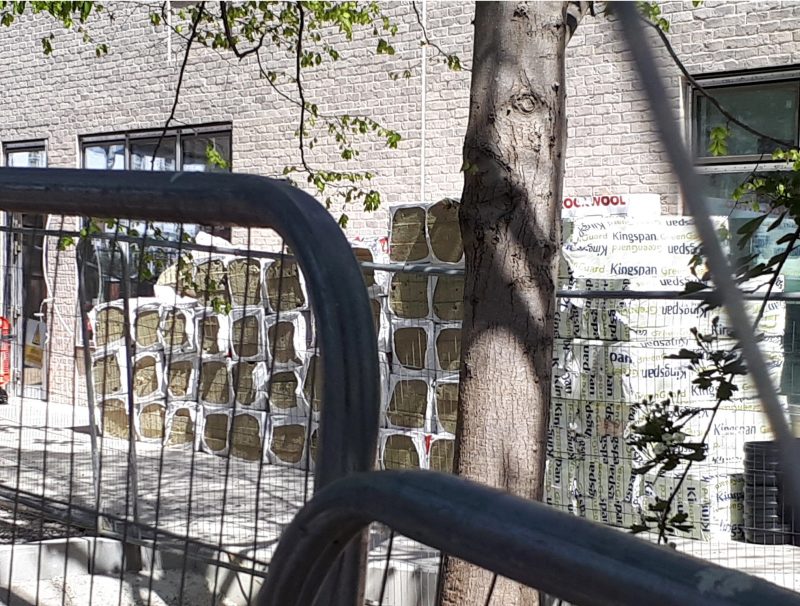The most unequal borough in Britain
Revisited Inequality and inequity in Kensington and Chelsea
The Most Unequal Borough in Britain 21.10.20Revisited Inequality and inequity in Kensington and Chelsea
The Most Unequal Borough in Britain 21.10.20As Kensington and Chelsea Council heads for the Grenfell Inquiry, Emma Dent Coad reports on the latest developments
It is truly disheartening to watch Kensington and Chelsea Council position itself in advance of the Grenfell Inquiry in mid-May, for the questioning of former Leadership team members.
We Councillors are sent daily news updates, carefully curated and framed to appear less damaging than they are in reality. We say the Grenfell Tower fire was an atrocity; the Council calls it a tragedy. In a recent Council briefing session on the Inquiry we were encouraged to admire the ‘tone’ of the Council’s QC during his opening statement, in comparison to that of Kensington & Chelsea Tenant Management Organisation. Let’s be clear – the £5m a year the Council is paying for legal fees will ensure our QC out-performs anything which the vestiges of our former tenant management team could hope to muster.
The current Council Leadership team, carefully trained and groomed to present the ‘acceptable’ face of Kensington and Chelsea Council, are in reality no better equipped with the necessary skills, experience, relevance, or indeed caring, than the bad faith actors of the former leadership who presided over the worst peacetime disaster of our lifetime. We are bombarded with endless empty apologies and empathy posturing. It is unconvincing. We see through it. They are still failing.

In the midst of this anxious period, on 17th April a North Kensington resident was walking past a Council building site for a new primary and SEN school. She spotted something so appalling, so terrifying, that she rushed home and was physically sick. She had seen a large pile of materials stacked outside the school waiting to be fitted; it was Kingspan GreenGuard insulation.
Anyone who’s been following the Grenfell Inquiry will be aware that Kingspan – who supplied materials for the upper part of Grenfell Tower that burned so ferociously when the flames reached it – have admitted publicly that they ‘gamed’ fire testing. In other words, when a test result came back which they didn’t like, they used an earlier test result which said the material was safe to use on high rise buildings.
They lied. 72 died.
When we researched the flammability of Kingspan GreenGuard over that weekend, we all felt sick. It was expanded polystyrene, and the thickness of it, I was informed, meant it qualified as Grade F – even more flammable than the material used on Grenfell Tower.
Anger rose in the community over the weekend, and on the Monday at 8am campaigners held a protest outside the school. After a year of shielding, I was finally vaccinated and free to join them. The Deputy Leader of the Council arrived, spoke to protestors, and went onto the site to find out what was happening.
His account was hardly reassuring: the Grade F highly flammable material was ‘only’ being used under the floors. However he had demanded that it was removed from the site, and started an investigation to find out how many of their recent construction projects may have used this material ‘in error’. He also stated that, while this particular project had commenced in 2018, it had been planned in detail before the Grenfell Tower fire in June 2017.
It is a terrifying thought that the new Deputy Leader, the very person who has had oversight of all regeneration and building projects since July 2017, had no notion or perhaps even interest in projects planned before the fire. Didn’t it occur to him that these should be put under the microscope?
There were numerous Council-led construction projects on the go before the fire: new school buildings (with private housing built on playgrounds); office buildings; homes built for private rent to provide an income for the Council. Many of them have proved to be very badly built, causing endless problems with leaks, dodgy drains, ill-fitting fire doors, poor electric wiring. The Council hit the headlines again in August 2019 when homes that Grenfell survivors had been moved into proved to be ‘high fire risk’ due to lack of protection between floors, doors and ventilation, and fire wardens were immediately engaged.
At the time the Deputy Leader was quoted on the Fire Protection Association website saying: “Work is already underway to fix the issues with their building, which we bought from the private sector very recently. Sadly, this is part of a national issue. This council, like many others, no longer has faith in the building industry and checking industry. That is why we carry out our own safety checks for our peace of mind, and most importantly for the peace of mind of our residents.”
Extraordinarily, he omitted to state that the housing was built on Council land in partnership with a developer. It was a Council project, for private sector renting, which they then bought back at market price to house families made homeless by the fire. The duplicity is staggering.
Did someone just think it would be fine? Or did no one think at all?
Two weeks ago I asked the Council’s fire safety officer for a list of residential properties, Council and privately owned, that had fire safety issues. Colleagues in neighbouring Councils have these lists so they can be sure to support residents and signpost them to advice. However, it seems Kensington and Chelsea doesn’t have such a list. This is shocking.
The North Kensington community is sick of apologies from a Council that seems doomed to repeat its past mistakes. It seems to be stuck in a loop of incompetence, uncaring and denial. We are calling for commissioners to take over the Council, and will continue to do so until we are heard.
Image: Grenfell Tower. Author: Carcharoth, licensed under the Creative Commons Attribution-Share Alike 4.0 International license.